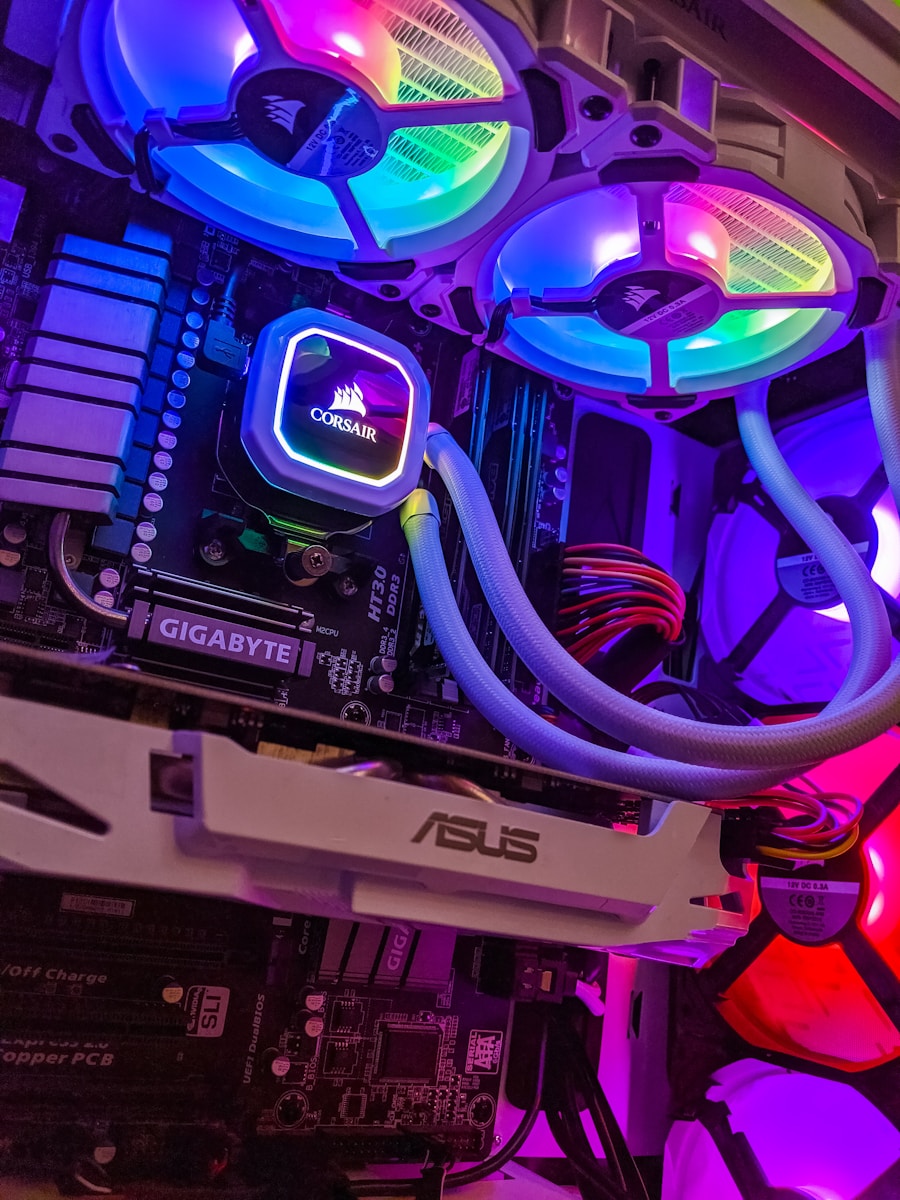Today, we’re going to be looking at 3 of the lowest latency audio interfaces under 400$.
Contrary to popular belief, you actually DON’T need to “break the bank” to get an audio interface with a single-digit round trip latency. Just in case you don’t know, audio latency above 10ms is noticeable to the human ear (which is why we’re aiming for single digits).
To give you an overview… We’ll be looking at the Steinberg UR22C, SSL SSL2+ and Focusrite Scarlett 2i2 (3rd gen). I’ll also be explaining the impact the USB2.0, USB3.0 and Thunderbolt protocols have in regards to audio latency.
Lastly, we’ll have some tips for optimizing your overall system-wide audio latency.
- Steinberg UR22C 2×2 USB3.0 Audio Interface
- SSL SSL2+ 2-in/4-out USB-C Audio Interface
- Focusrite Scarlett 2i2 (3rd gen) USB Audio Interface
- USB2.0 vs USB3.0 vs Thunderbolt (in regards to latency)
- What About UAD Audio Interfaces (in regards to latency)?
- 4 Tips to Reduce Internal Audio Latency
- Summary: 3 of the Lowest Latency Audio Interfaces (under 400$)
Steinberg UR22C 2×2 USB3.0 Audio Interface
| Sample Rate | Buffer Size | Round-Trip Latency |
| 48kHz | 64 Samples | 8.9ms |
| 192kHz | 64 Samples | 6.9ms |
Out of all the USB audio interfaces on the market, the Steinberg UR22C (and the UR24C) is usually what I recommend.
It’s actually got some of the best features on the market despite being one of the most affordable audio interfaces.
It’s also got GREAT performance when it comes to audio latency.
That’s partly because it’s one of the few USB3.0 audio interfaces on the market, but it’s mostly because of the quality of the converters.
That being said, the reason I put the Steinberg UR22C on the top of the list is because of its onboard DSP effects.
It’s similar to what Universal Audio does, except it’s not super expensive…
Personally, I say you can’t go wrong with the Steinberg UR22C.
SSL SSL2+ 2-in/4-out USB-C Audio Interface
| Sample Rate | Buffer Size | Round-Trip Latency |
| 48kHz | 64 | 8.9ms |
| 192kHz | 64 | 6.9ms |
Coming in second, we’ve got the SSL2+ by the legendary Solid State Logic.
What surprised me about this USB-C audio interface is its affordability despite being equipped with some of the highest quality preamps on the market.
Solid State Logic has built its reputation on quality and the SSL2+ doesn’t disappoint.
That being said, it’s also one of the lowest latency audio interfaces under 400$. It’s actually tied with the Steinberg UR22C/UR24C in regards to performance, but it’s got better preamps.
The SSL SSL2+ also has a special feature called “Legacy 4K” which emulates the analog richness of the classic Solid State Logic consoles.
That might be a reason why you’d choose it over the Steinberg UR22C…
Focusrite Scarlett 2i2 (3rd gen) USB Audio Interface
| Sample Rate | Buffer Size | Round-Trip Latency |
| 48kHz | 64 | 7.9ms |
| 192kHz | 64 | 5.9ms |
To be completely honest, I never expected the Focusrite Scarlett 2i2 (3rd gen) to have the best round-trip latency on this list.
It’s actually the most affordable audio interface on this list and it uses the USB2.0 protocol…
So, I’m not really sure how to explain why that is. The only logical explanation I could think of is that Focusrite put all of its energy into the performance of the actual converters.
Technically speaking, the Focusrite Scarlett 2i2 (3rd gen) should have quite the disadvantage because it’s the only USB2.0 audio interface on this list.
We’ll talk more about why that is later… For now, just take it for what it is!
The Scarlett 2i2 (3rd gen) is one of the most affordable audio interfaces on the market and that goes double considering the fact that it’s also one of the lowest latency audio interfaces.
Does that mean it’s the best choice? I don’t personally think so (not for 1ms anyway).
USB2.0 vs USB3.0 vs Thunderbolt (in regard to latency)
When we’re talking about audio interfaces, there are TWO components that affect performance…
- The Converters (ADC/DAC)
- The Protocol (USB, Thunderbolt, etc…)
However, it seems that the data transfer protocol isn’t as significant as I thought.
Technically speaking though, USB3.0 should provide better round trip latency than USB2.0 and that goes DOUBLE for Thunderbolt.
Why’s that? Well, the protocol determines how efficiently data is being read/written to the storage drive.
In that sense, Thunderbolt technology is REVOLUTIONARY!!
So, why haven’t I listed any Thunderbolt audio interfaces yet? That’s coming up!
Of course, the actual DRIVER being used to support these audio interfaces is just as important. That’s part of the reason why some audio interfaces perform better than others.
That being said, I still believe that it’s the hardware that makes the biggest impact.
That would explain why the Focusrite Scarlett 2i2 (3rd gen) got such a good score despite being a USB2.0 audio interface.
Okay, so let’s move onto the next mystery…
What About UAD Audio Interfaces (in regard to latency)?
| Sample Rate | Buffer Size | Round-Trip Latency |
| 48kHz | 64 | 12.9ms |
| 192kHz | 64 | 3.4ms |
If you’ve already worked with Universal Audio (UAD) audio interfaces or have done some research, you might be aware that they perform quite poorly in regard to audio latency.
That’s PARTLY true… It actually depends on the sample rate you record at.
For example, the Universal Audio Apollo Twin X gets a round trip latency of 12.9ms when recording at a sample rate of 48kHz (64 sample buffer), but get this…
It scores 3.4ms at a sample rate of 192kHz (64 sample buffer)!!
How is this possible? You’ll learn in the next section WHY increasing the sample rate reduces audio latency, but that still doesn’t explain such a dramatic change.
I personally use the Universal Audio Arrow and it’s the same situation.
The only explanation I could think of is the UAD audio interfaces were designed to perform at their best at higher sample rates.
I’m still waiting for confirmation on that!
However, the real advantage with Universal Audio devices is the fact that they have onboard DSP to process UAD plugins in REALTIME.
That’s why audio latency shouldn’t even matter when it comes to UAD audio interfaces.
I personally only plug my Arrow when I record something with it otherwise, I simply use the Core Audio driver which obviously provides the best possible round-trip latency.
I hope that clears things up in regards to Universal Audio!
4 Tips to Reduce Internal Audio Latency
Before closing, I just wanted to share some tips on how YOU can improve your total round trip latency REGARDLESS of the audio interface you use.
The truth is, your computer has the BIGGEST impact on audio latency.
Having a powerful machine is the only way you’ll get to record at higher sample rates and with a small buffer WITHOUT getting artifacts/glitches…
Upgrade Your CPU
The component that affects audio performance the most is the CPU.
Nowadays, I don’t recommend anything less than 10th generation Intel (if you’re using PC) and/or the M1 chip if you’re using Mac.
Ideally, get the best CPU you can afford as that’ll benefit your entire setup the most.
Use SSD Instead of HDD
The second-most important component when it comes to signal-processing is your storage.
It’s often overlooked, but using an SSD greatly improves performance when reading/writing data to and from your storage drive.
Think about it, your storage drive is what you record ONTO…
That being said, upgrading from a HDD to an SSD should improve your round-trip latency a little bit.
Reduce Your Buffer Size
So, your buffer size will depend on what your computer can handle.
The lower you set your buffer size, the lower your round trip latency will be.
However, if you set your buffer size TOO LOW (relative to your computer’s performance), you’ll likely experience artifacts/glitches and you can’t undo that once it’s been recorded…
Increase Your Sample Rate
This might seem counter-intuitive, but increasing the sample rate actually decreases your round-trip latency. However, it puts more stress on your CPU.
That being said, you’ll need a powerful CPU to record at higher sample rates.
You’ll have to find the perfect balance of buffer size and sample rate for your machine.
Install The Right Drivers (if using Windows)
If you’re using Windows, installing the correct drivers makes all the difference.
Most likely, the manufacturer of your audio interface should provide an up-to-date driver on their website (or with the actual device).
Also, installing the ASIO driver is a MUST!!
Summary: 3 of the Lowest Latency Audio Interfaces (under 400$)
So, which of these audio interfaces are you thinking of purchasing?
Of course, this is MY personal selection of the lowest latency audio interfaces under 400$. There are definitely other audio interfaces that I didn’t mention.
If you feel like I missed an important one, let us know in the comment!
To be honest though, I still think that Universal Audio is better if you need the lowest possible audio latency for recording. With the onboard DSP, you can record at near-zero latency with UAD plugins.
Why else would you need low audio latency?
When it comes to using software instruments, mixing and mastering I DON’T use my audio interface. As I mentioned, I simply use the Core Audio driver that comes with macOS.
There’s no other way to get such low audio latency with an external device.
BUT, that’s just how I do things… You may actually need an audio interface 100% of the time (or have something against UAD), so that’s why I decided to write this article.
If you have any questions or need me to clarify anything, let me know in the comments. Also, don’t forget to join us on Discord and to support our Patreon page if you enjoy the content.
Thanks for reading, until next time!
Focusrite Scarlett 2i2 (3rd gen):
Sources
https://www.youtube.com/watch?v=PSa27hkj3G8&ab_channel=JulianKrause
https://www.youtube.com/watch?v=ygeCS69MM7w&ab_channel=Podcastage
https://www.youtube.com/watch?v=b7wwjHnT6WE&ab_channel=Podcastage
https://www.youtube.com/watch?v=vszllSJwQEU&ab_channel=Podcastage








